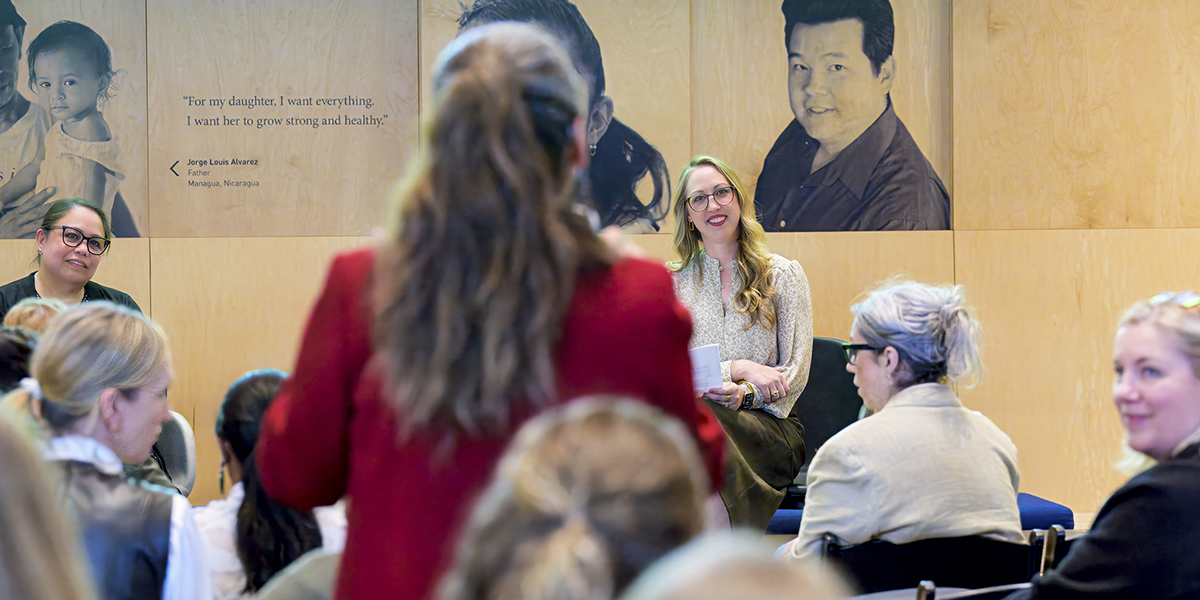Step 4: Do it. Integrate a blended workforce
This is part four of our series on blended workforce implementation. In the final step, there are two critical activities that happen in parallel:
- Select a contract vendor partner
- Prepare your organization to become a high-performing blended workforce (we’ll say it – this is a change management exercise – read below for a framework to handle with care)
Select the right partner
Establishing a strong partnership with the right contract vendor partner(s) is key to implementing and sustaining a blended workforce model. Here are five things to look for when sourcing your vendor partner.
Skills are a non-negotiable
A bit of a no-brainer if you’ve been riding along with this whole series, but above all else, the vendor(s) you select must demonstrate expertise in filling the skills gaps you need on your team. This is not a square peg, round hole situation – you are hiring a vendor to specifically solve for the skills and capacity that your team lacks. You have choice in finding the right partner in this work and you do not need to solve all skills with the same vendor. You can choose niche partners when building your dream team – find those who are the best at what your team is not.
Agility for now and next
A strong vendor agency partner will work with you to understand your business strategy and business needs and be invested in your individual leadership trajectory. Together, you will co-design a blended workforce plan for what’s now and next.
Strategic and P&L agility are core value props of the blended workforce. While you’ve made an investment into your employees that innately means you expect to bring them along on the journey for the long haul, the skills and capacity gaps that emerge over time as business maturity, strategy and objectives shift should be solved with your contract squads. A good partner agency will map these needs with you and anticipate change. There is benefit to your business, and your contracted and employee team members, when a blended workforce roadmap is developed. Specifically, clear expectations about contract starts, ends, and shifting skills or levels enables your blended team members to dial in and do great work without questioning when an engagement will renew or end.
There are many (MANY) agencies out there who can turn a job description into a statement of work. Please don’t hire for that skill alone. Choose a partner who will take the time to listen and play back to you the short and long-term plan for your blended workforce as an integral and agile tool in your business strategy.
Values matter
Values will influence your working relationship – from candidate quality to contract structure, on-going account relationships and eventually offboarding. If your organization values speed over quality, then choose speed over quality in your partner vendor selection. If your team values diversity of thought, choose a partner that prioritizes diverse representation on their team. In short, accept what you are and find alignment with your vendors because this is a working relationship. Regardless of employment type, you are bringing people into your organization to work on your teams, and it’s important that you uphold the same values you covet when hiring employees.
Consultant retention is the canary in the coal mine
To get a very clear answer about the way an agency plays, ask about their consultant’s experience and ask about consultant retention. Do people stay in their consulting roles and what do they value about the agency?
High consultant turnover is a major risk to your blended workforce strategy. A strong partner will work endlessly to mitigate that risk – prioritizing people within its organization. When turnover is high, it’s a signal one or all of these practices are happening routinely within the agency:
- Candidates are not effectively vetted for the work they are asked to perform – the talent acquisition chops of the agency are not up to par.
- The agency does not effectively scope work and either scope creep or skills match are to blame, leading to consultant burnout or dissatisfaction.
- The consultant is operating on an island – disconnected from their fellow consultants and perceived as an outsider by the client organization.
This really matters. When consultants exit projects early, they create a cycle of work for you, their clients, and your team that is disruptive and time-consuming. Hire a partner that values people and proactively facilitates an environment of mutual trust, respect, and appreciation.
Check the technology and compliance boxes
We’re keeping the recommendations here clear and actionable – review this list with your internal teams to determine what will be necessary for your workstreams and then review that list up front with your partners of choice.
- What data will the supplier interact with?
- How does that type of data access fit into my company’s policies/best practices?
- Of the data shared with the supplier, how is my data managed and maintained by the supplier to mitigate my risk?
- Where is my data stored?
- What policies and protocols are in place to protect my data?
- What happens if there is a data incident or breach?
- What happens to my data at the close of the supplier relationship?
Change is a-coming
There is no gentle way to say this – implementing a blended workforce is a change exercise.
Inevitably, the transition will affect your existing team in different ways – some will embrace it enthusiastically, others may push back, and some will fear their job is at risk. This is OK, the change will ultimately drive a positive outcome as your team finds itself working in its Highest & Best Use (HBU) – that kind of change means letting go of and unwinding all the ways in which your team members define their organizational and individual worth. There’s a whole lot packed up in the idea that doing all the things makes someone more valuable so handle with care.
How you take your team through this change will define whether you successfully launch a high-performing team. When we talk about high-performance, we are not talking about hustle for hustle-sake. High performance means a team working in a connected way, aligned to achieving the most critical results (Magnets), propelling forward (Momentum) to work through the sprint and protecting the energy needed to sustain (Maximum) change.
At Lions & Tigers, our TRUST change methodology is EQ-centered. We manage both the practical and emotional implications of changes on organizations with a framework that applies all five elements – Transparency, Relationships, Uproot, Sustainability & Tribute – to three major change workstreams – change to the business, change to the team and sustainable operations.

Implementing a blended workforce is a long-term strategic decision, handle with care and apply the appropriate expectations and resources to land purpose and communicate the impact of the decisions.
Need help thinking through next steps for your team? Reach out, we love every opportunity to co-design a more human & valued work experience, advancing impact, access, and belonging.
Revisit the full series below.
How to Implement a Blended Workforce
Step 1: Define business outcomes
Step 2: Know the numbers that matter
Step 3: Assemble the dream team
Step 4: Do it. Integrate a blended workforce
Written by Ashley Jude








0 Comments